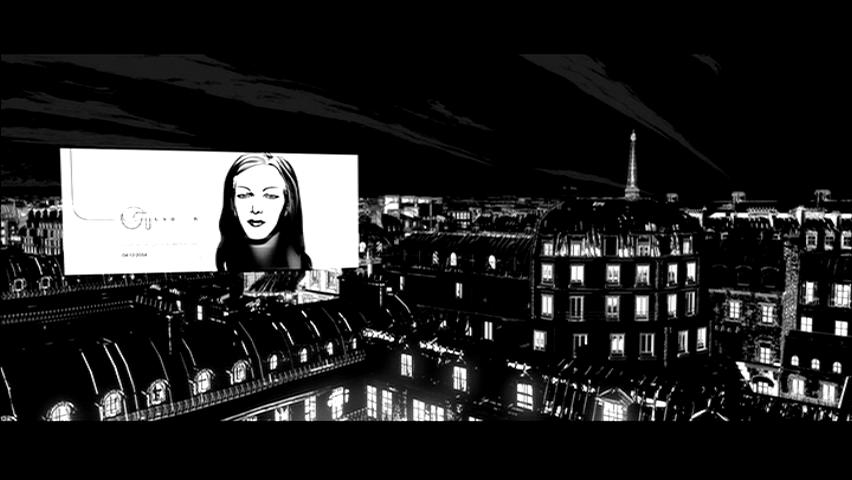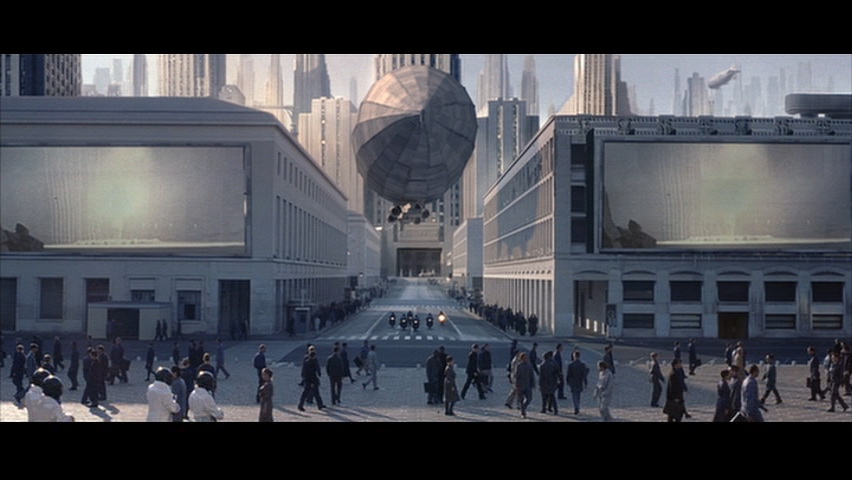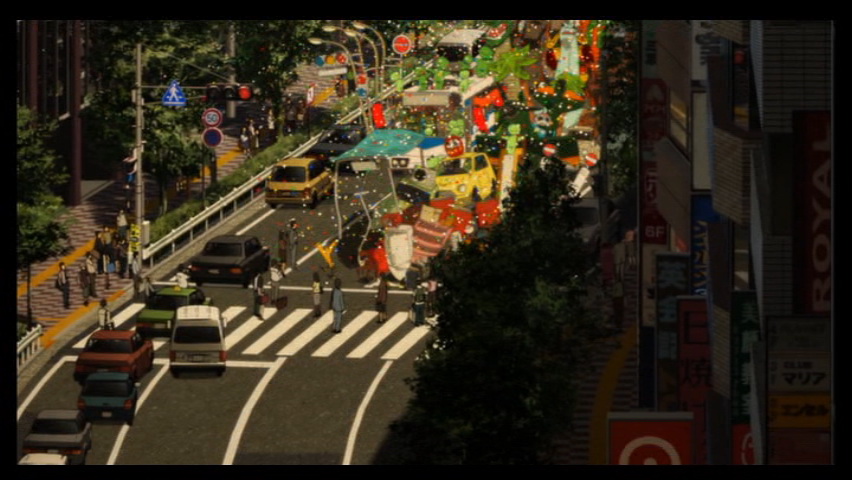From looking at the definitions of the words mask, clown and Impersonation , in the context of the selected films for this course; we find a variety of dystopic and anti-utopian realities conveyed through theatrical inversion of forms, meanings and expectations. This inversion of understanding can be seen through dystopic urban perspectives as well as through the actions and relationships of characters within each film.
A distinction can be made between the anti-utopian and dystopic world view. Dystopia represents a world that is pervaded with poverty, crime, and oppression. Good examples of this from the course material are Batman as well as Brazil and Clockwork Orange. Anti-utopian visions show a world that pretends to be utopian but is actually a malign inversion of the image it seeks to display. Examples of this include Equilibrium, Alphaville and Renaissance.
To portray with poignancy dystopia or anti-utopia, inversion of expected roles and behaviours are necessary. A carnivalesque ambiguity has to become apparent. The use of masks, clowns and impersonation are major tools of the director in creating this ambiguity. Each director in the course material has approached this in different ways. Most clearly it can be seen in the costumes of the characters. A deeper layer of inversion occurs in the relationships of the characters, where our expectations are often thwarted by invisible masks, roles and impersonations. The use of clowns particularly subverts the comic icon into something far more terrifying, especially seen in Batman, A Clockwork Orange and Paprika. The innocent or childlike becomes perverted as seen also in the baby masks of Brazil . Beyond the character, another powerful layer of masquerade used by each director is that of the urban vision and the architectural set. Especially in the anti-utopian world, the architecture itself becomes a mask for the powers that be. This is seen most acutely in Equilibrium, Alphaville, Renaissance, Paprika , Brazil and The Cabinet of Dr. Caligari, since in these films the set simultaneously masks the insidious intent of each society while remaining a representation of it.


